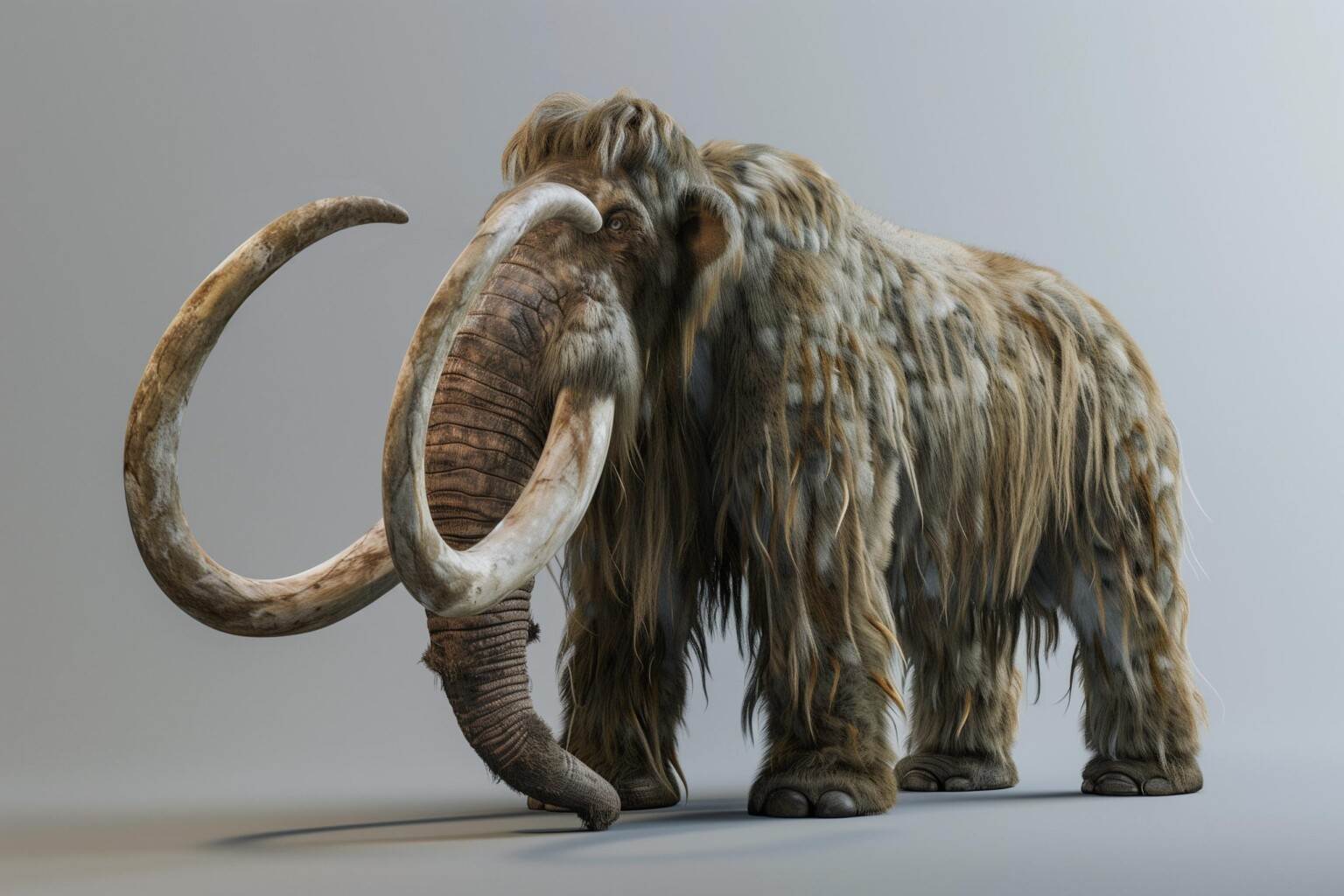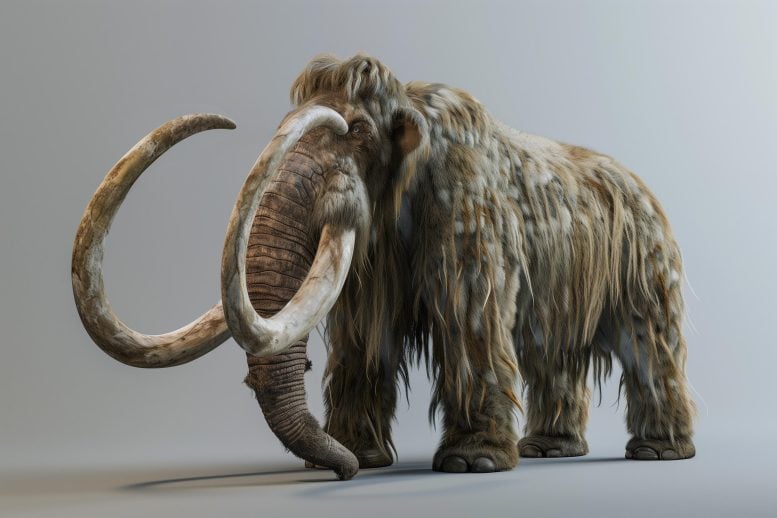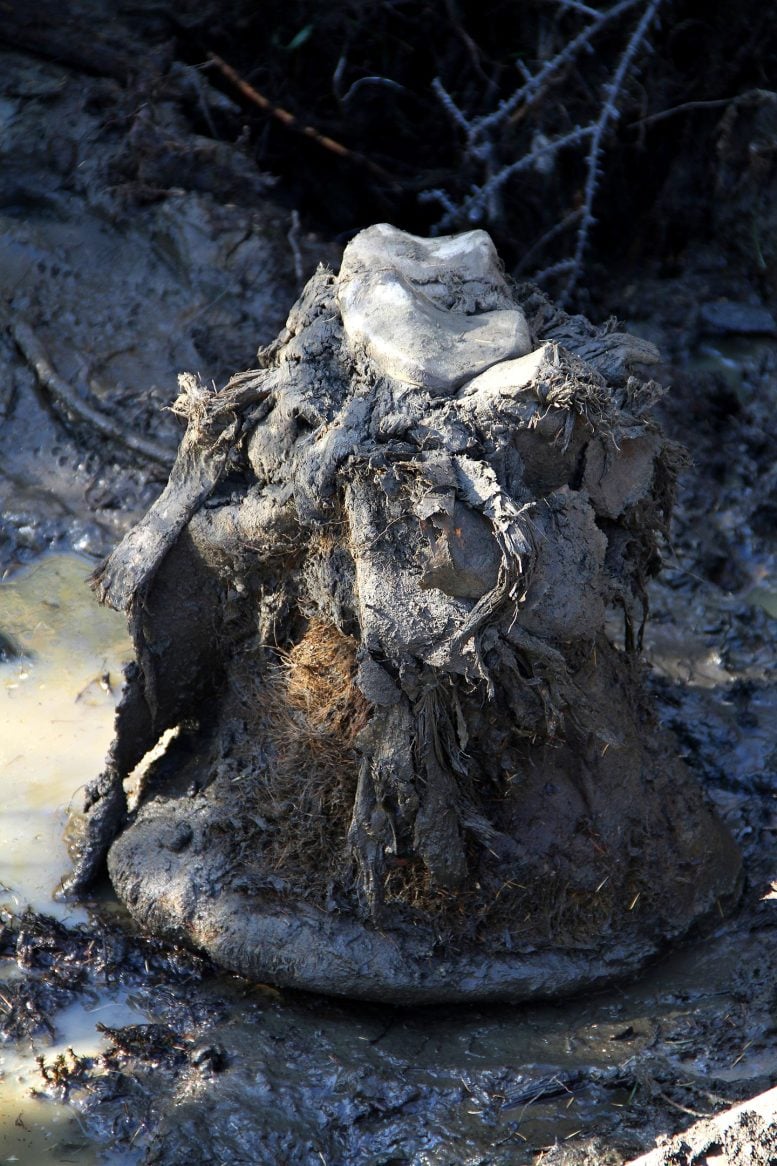De-Extinction Breakthrough: Unveiling the Woolly Mammoth Genome With Groundbreaking DNA Technology

Technology tamfitronics
Researchers have successfully reconstructed the genome and 3D chromosomal structures of a 52,000-year-old woolly mammoth, a breakthrough using ancient DNA preserved by freeze-drying. Credit: SciTechDaily.com
A groundbreaking study has mapped the genome and 3D chromosomal architecture of a 52,000-year-old woolly mammoth, uncovering details of its genetic activity and offering new prospects for de-extinction research.
An international team of researchers has assembled the genome and 3D chromosomal structures of a 52,000-year-old woolly mammoth. This is the first time such a feat has been achieved for any ancient
A photo of a mammoth foot in a permafrost environment. Credit: Love Dalen
Advancements in Genomic Architecture
“This is a new type of fossil, and its scale dwarfs that of individual ancient DNA fragments—a million times more sequence,” says corresponding author Erez Lieberman Aiden, Director of the Center for Genome Architecture at Baylor College of Medicine. “It is also the first time a karyotype of any sort has been determined for an ancient sample.”
Knowing the three-dimensional architecture of a genome provides a lot of additional information beyond its sequence, but most ancient DNA specimens consist of very small, scrambled DNA fragments. Building off work mapping the 3D structure of the human genome, Aiden thought that if the right ancient DNA sample could be found—one with the 3D organization of the fragments still intact—it would be possible to use the same strategies to assemble ancient genomes.
Unprecedented DNA Preservation
The researchers tested dozens of samples over the course of five years before landing on an unusually well-preserved woolly mammoth that was excavated in northeastern Siberia in 2018. “We think it spontaneously freeze-dried shortly after its death,” says corresponding author Olga Dudchenko of the Center for Genome Architecture at Baylor College of Medicine. “The nuclear architecture in a dehydrated sample can survive for an incredibly long period of time.”
To reconstruct the mammoth’s genomic architecture, the researchers extracted DNA from a skin sample taken behind the mammoth’s ear. They used a method called Hi-C that allows them to detect which sections of DNA are likely to be in close spatial proximity and interact with each other in their natural state in the nucleus.
Insights Into Woolly Mammoth Genetics
“Imagine you have a puzzle that has three billion pieces, but you don’t have the picture of the final puzzle to work from,” says corresponding author Marc A. Marti-Renom, an ICREA research professor and structural genomicist at the Centre Nacional d’Anàlisi Genòmica (CNAG) and the Centre for Genomic Regulation (CRG) in Barcelona. “Hi-C allows you to have an approximation of that picture before you start putting the puzzle pieces together.”
Then, they combined the physical information from the Hi-C analysis with DNA sequencing to identify the interacting DNA sections and create an ordered map of the mammoth’s genome, using the genomes of present-day elephants as a template. The analysis revealed that woolly mammoths had 28 chromosomes—the same number as present-day Asian and African elephants. Remarkably, the fossilized mammoth chromosomes also retained a huge amount of physical integrity and detail, including the
Discover more from Tamfis Nigeria Lmited
Subscribe to get the latest posts sent to your email.



 Hot Deals
Hot Deals Shopfinish
Shopfinish Shop
Shop Appliances
Appliances Babies & Kids
Babies & Kids Best Selling
Best Selling Books
Books Consumer Electronics
Consumer Electronics Furniture
Furniture Home & Kitchen
Home & Kitchen Jewelry
Jewelry Luxury & Beauty
Luxury & Beauty Shoes
Shoes Training & Certifications
Training & Certifications Wears & Clothings
Wears & Clothings


















